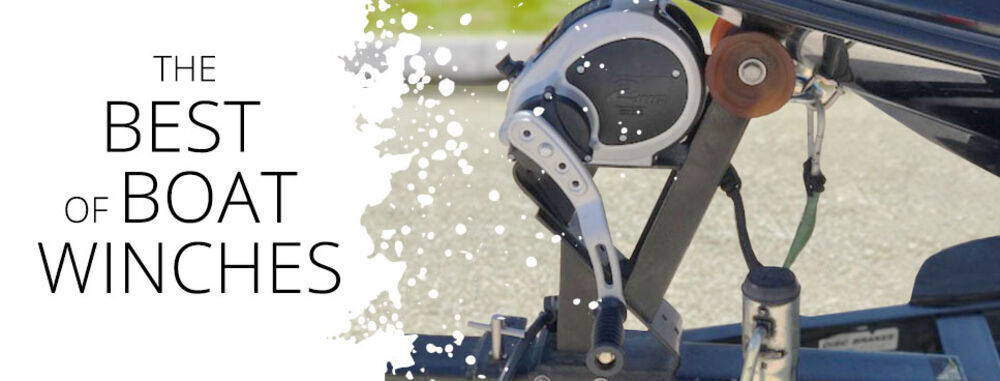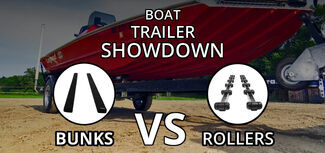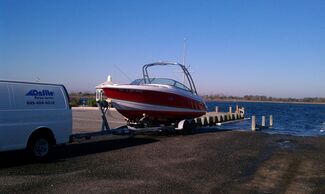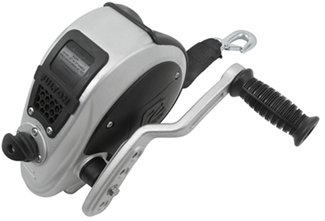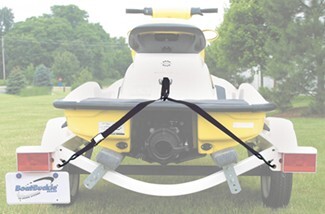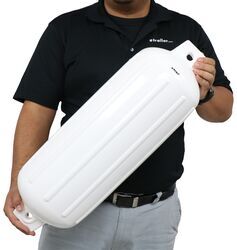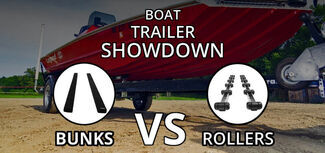
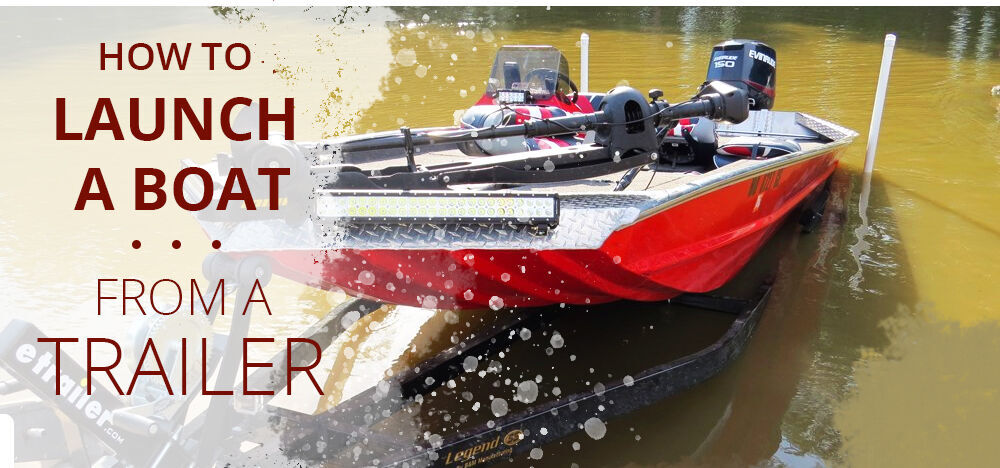
How to Launch a Boat from a Trailer (And Load it Back Up)
Preparing your boat for launch Launching your boat from the trailer Loading your boat on the trailer
1. How to Prepare Your Boat for Launch
Put your drain plug in Load up your gear in the boat ( coolers, fishing rods, paddles, etc.—basically, if you want it with you on the water, you should put it in your boat now). Remove all your straps and tie-downs (transom straps, gunwale straps, etc.) securing your boat to your trailer EXCEPT for your winch strap. Keeping the winch strap on is especially crucial if you have a roller trailer. Without it, your boat will belly-flop onto the concrete. If you have a transom saver, remove it now. Disconnect your trailer lights before you submerge them. Put on your boat bumpers/fenders. If you have guests that will be riding in the boat, they can climb aboard now. Check your battery Put your drain plug in (yes, we already said this, but it bears repeating—you don't want your boat filling up with water!

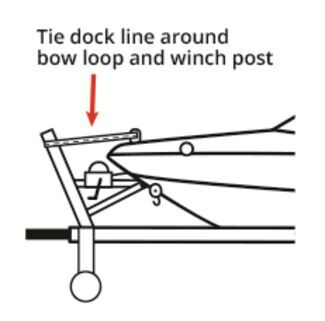
If you're launching your boat alone: If you're launching your boat alone, you're going to need some method to control the boat once it's off your trailer. Tie one end of a bow line around your bow loop and the other around your winch post. You'll use this later to keep your boat from drifting off without you (see Image A). If you're launching your boat with a helper: Have your helper climb aboard the boat. He or she will sit in the boat and steer it while you launch the vessel and park your vehicle. Teamwork makes the dream work! To be on the safe side, you can use the bow line method of securing your boat mentioned above under the "launching your boat alone" section. You'll appreciate the extra control if for some reason your boat doesn't start in the water! If you're using a bunk trailer: Some people with bunk trailers choose to loosen their winch straps in the staging area IF they trust that their boat won't slide off until they get into the water. However, you should NEVER do this with a roller trailer (your boat will slam right into the ground), and it's not necessary with a bunk trailer either. You can disconnect your winch strap later when you're ready to launch.
2. How to Launch Your Boat from the Trailer
Backing Up Your Boat Trailer
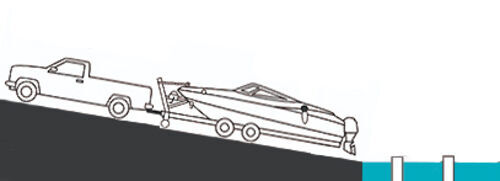
How Far to Back Boat Trailer into Water

Releasing Your Boat into the Water

Loading a Boat on a Trailer By Yourself

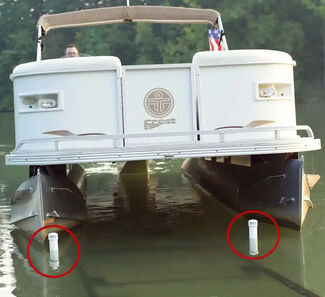
Maximize Your Visibility If you're doing the job solo, it may help to lower your tailgate or open your vehicle's rear hatch for more visibility. Don't Be Afraid to Use Guides Guides are a great way to make launching and retrieving your boat easier. These guides attach to the end of your trailer and extend out of the water, so you can easily center your boat and make sure it's properly positioned on the trailer as you load or unload.
3. How to Load Your Boat on the Trailer

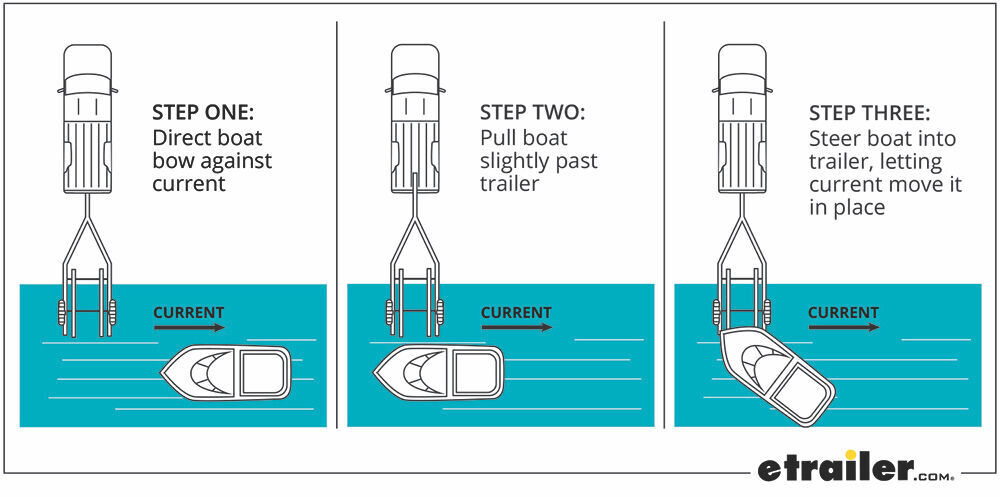
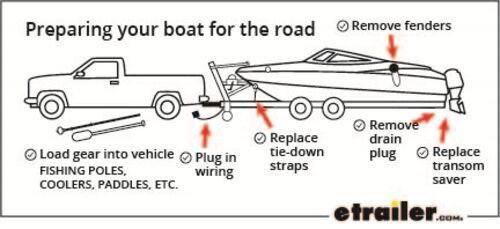
Pull the drain plug and drain any livewells (do this first to give your boat time to drain) Strap the boat down (transom straps, bow straps, gunwale straps, safety strap) Put the transom saver back in place, if you have one Unload the boat and put any gear back in your vehicle Plug your trailer lights back in

Departments
Towing
- Trailer Hitch
- Fifth Wheel
- Gooseneck
- Towing a Vehicle
- Front Hitch
- RV Hitch
- ATV Hitch
- HD Truck Hitch
- Vehicle Wiring
- Brake Controller
- Ball Mounts
- Weight Distribution
Sports and Recreation
Trailer Parts
- Utility Trailer
- Boat Trailer
- Landscape Trailer
- Enclosed Trailer
- 5th/Camper Trailer
- Car Hauler
- Horse Trailer
Vehicle
Contact & Help

Popular Vehicles
- Subaru Forester
- Ford F-350 Super Duty
- Ford F-250 Super Duty
- Chevrolet Silverado 1500
- Jeep Wrangler Unlimited
- Jeep Wrangler
- Ram 3500
- Toyota Highlander
- Ram 2500
- Chevrolet Silverado 2500
- Subaru Outback Wagon
- Chevrolet Silverado
- Dodge Ram Pickup
- GMC Sierra 2500
- Ram 1500
- Ford F-250 and F-350 Super Duty
- Jeep Grand Cherokee
- Toyota Tacoma
- GMC Sierra 3500
- Toyota Tundra
- Ford Escape
- More >>


